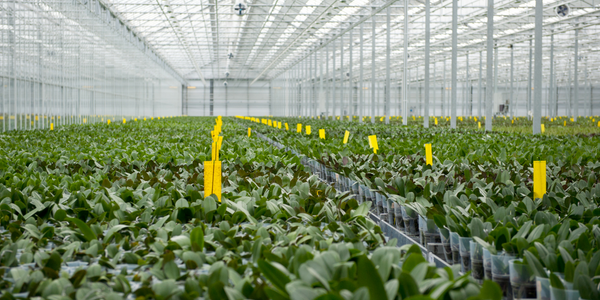Download PDF
Enhancing Wood Heat Treatment Processes: A Case Study of U.S.D.A. Forest Products Laboratory
Technology Category
- Sensors - Thermal Conductivity Sensors
- Sensors - Utility Meters
Applicable Industries
- Agriculture
- Buildings
Applicable Functions
- Product Research & Development
Use Cases
- Structural Health Monitoring
The Challenge
The U.S.D.A. Forest Products Laboratory, a leading wood research institute, was facing challenges in accurately determining the thermal conductivity of wood, a critical factor in the wood drying process. The conventional equations used for this purpose, developed over 50 years ago, only provided a rough guideline for certain types of wood. This led to lumber mills and wood processing companies having to perform costly and time-consuming trial-and-error tests to determine the proper temperatures and drying times, often resulting in high scrap rates. The heat transfer coefficients of wood depend on many variables including ring density, tree age, initial moisture content, and cell orientation. These characteristics are usually not uniform across all sections of the same tree, with wood structure affected by seasonal weather differences. Furthermore, ring density in small versus large-diameter trees varies widely depending on growth rates for different conditions such as surrounding vegetation and climate.
About The Customer
The customer in this case study is the U.S.D.A. Forest Products Laboratory, established in 1910 by the U.S. Department of Agriculture Forests Service. Located in Madison, Wisconsin, it serves the public as the nation’s leading wood research institute and is internationally recognized as an unbiased technical authority on wood science and utilization. The lab plays a crucial role in the public-private partnership needed to create technology for the long-term sustainability of forests. One of its key areas of research is the thermal conductivity of wood, which is critical in the drying process.
The Solution
To address this challenge, the laboratory developed models using ANSYS Parametric Design Language (APDL) to simulate the structural variation of cell porosity and alignment in determining effective heat transfer coefficients. On a macro level, boards cut from different locations in a typical log were modeled, solved, and plotted to examine the effects of wood structure on the transient heat transfer process using thermo conductivity values obtained from the micro-level analyses. Dozens of simulations were required to determine the heat transfer rate for a range of wood geometries and structural conditions. APDL enabled repetitive analyses of these varying parameters by allowing different values to be inserted and multiple analysis re-run without manually rebuilding multiple simulations.
Operational Impact
Quantitative Benefit
Related Case Studies.

Case Study
Intelligent Farming with ThingWorx Analytics
Z Farms was facing three challenges: costly irrigation systems with water as a limited resource, narrow optimal ranges of soil moisture for growth with difficult maintenance and farm operators could not simply turn on irrigation systems like a faucet.

Case Study
Energy Saving & Power Monitoring System
Recently a university in Taiwan was experiencing dramatic power usage increases due to its growing number of campus buildings and students. Aiming to analyze their power consumption and increase their power efficiency across 52 buildings, the university wanted to build a power management system utilizing web-based hardware and software. With these goals in mind, they contacted Advantech to help them develop their system and provide them with the means to save energy in the years to come.

Case Study
Greenhouse Intelligent Monitoring and Control Solution
Farming Orchids is the most successful form of precision farming in Taiwan, and also the most exported flower. Orchids need a specific temperature and humidity conditions to grow and bloom, and its flowering time may not be in line with market demands, so the price collapses when there is overproduction. Therefore, some farmers began to import automated greenhouse control systems for breeding and forcing, which not only improves quality, but also effectively controls the production period and yield to ensure revenue. In 2012, an orchid farmer built a Forcing Greenhouse of about 200 pings (approximately 661 Square Meters) in Tainan, Taiwan. The system integrator adopted Advantech’s APAX-5000 series programmable automation controllers to build the control platform, coupled with Advantech WebAccess HMI/SCADA software, to achieve cloud monitoring. The staff of the orchid field can monitor important data anytime via smart phone, iPad, and other handheld devices, and control the growth and flowering conditions. System requirements: In the past, most environmental control systems of orchid greenhouses in Taiwan used PLCs (Programmable Logic Controller) with poorscalability and control, and could not be connected to the Internet formonitoring from the cloud. For advanced database analysis and networking capability, the PC platform must be adopted. Therefore, PAC Systems (Programmable Automation Controller) with both PLC programming capabilities andPC functions is a better choice.The environmental control of the Orchid greenhouse switches on and off devices like fan, shade net, cooling/heat pump, liquid flow control, water-cooling wall etc. It is controlled by a control panel of electric controllers, and is driven by a motor, to adjust the greenhouse temperature, humidity, and other environmental conditions to the set parameters.

Case Study
Intelligent Building Automation System and Energy Saving Solution
One of the most difficult problems facing the world is conserving energy in buildings. However, it is not easy to have a cost-effective solution to reduce energy usage in a building. One solution for saving energy is to implement an intelligent building automation system (BAS) which can be controlled according to its schedule. In Indonesia a large university with a five floor building and 22 classrooms wanted to save the amount of energy being used.







